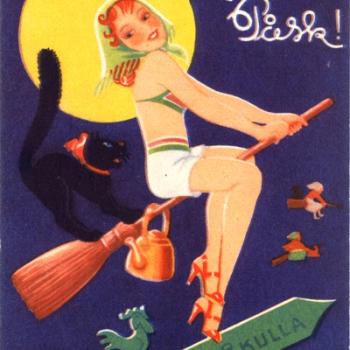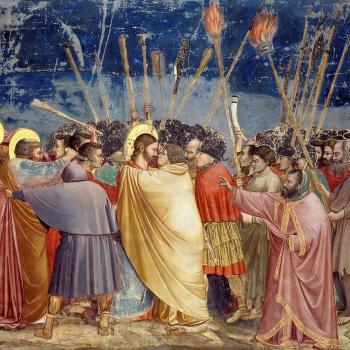“I am Protennoia, the Thought that dwells in the Light. I am the movement that dwells in the All, she in whom All takes its stand, the first-born among all who came to be, she who exists before the All.”
Trimorphic Protennoia

Divine Providence is a concept, especially within Christianity, that denotes the presence of God within creation and the upholding of natural order. Whilst this concept is ascribed to God, there is a provenance that attests to Providence being actually feminine in nature and, indeed, the primordial Goddess herself. Indeed, as we shall see, She has Luciferian Promethean connotations, and spans mythologies, continents and time itself, even beyond fate.
From Latin providentia, meaning fore-sight, it is cognate with the Greek pronoia, an Oceanide and wife of the titan Prometheus, ‘forethought’, who is closely linked to the goddess Athena. With Prometheus, Pronoia gave birth to Deucalian, the Greek counterpart to Noah and Utnapishtim, the mythical character from Gilgamesh who survives the deluge with the advice of Enki and tutors Gilgamesh on the attainment of immortality. Like Cain in the Middle East, Deucalian is accredited with introducing the earliest cities:
“…goodly Deucalion, who first founded cities and reared temples to the immortal gods, and first ruled over men.”
Argonautica 3rd Century BCE
In Ovid’s Metamorphoses, we learn that Deucalian, the son of Prometheus (forethought) was married to Pyrrha, the daughter of his uncle Epimetheus (afterthought). Prometheus, who stole the sacred fire from the Olympian smith god Haephestus and gave it to man, is connected to the Sumerian Enki, as Deucalian was forewarned of the flood by his father, the role played by Enki in Gilgamesh. We can surmise that, while Deucalian had the forethought (Prometheus) to make provision against the flood, it was (invisible and unknown) his mother foresight (Pronoia) who enabled him to predict the coming deluge – without the foresight, he could not have had the forethought. In many respects, we can consider Prometheus and Pronoia as masculine and feminine aspects of One.

Pyrrha, meaning ‘flaming’, of course, has achoes of Norea, the Biblical Noah’s wife. Of course, Norea, possibly originating in words meaning ‘light’ and ‘shining’, features in Gnostic creation myths as the descended Sophia who cries out and receives aid from the Four Luminaries, agents created by Sophia. In the Gnostic trinity of the divine feminine, Trimorphic Protennoia, the first can be seen in Barbelo, the second Sophia and the third Norea, each being a natural flow from the first. Norea, therefore, is the feminine aspect of the logos, the Word, and is cognate with another familiar character: Na’amah, sister of Tubal-Cain. With Prometheus, Pronoia and Deucalian, we have a trinity of “…as three permanences: the Father, the Mother, the Son” as asserted by Trimorphic Protennoia in the Gnostic text. Of course, with Norea/Pyhhra, the daughter, we have the completion of the Tetragrammaton: YHVH! Which, as we learn in the Sefer Yetzirah (Book of Formation), emerges from the Three Mothers Aleph, Mem & Shin – which appears perfectly apt in Gnostic terms as Barbelo (Pronoia), Sophia and Norea.
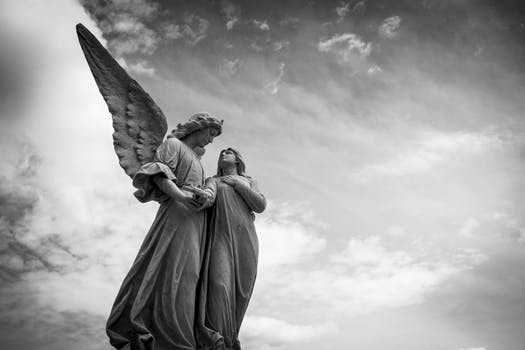
Within psychology, Pronoia has been adopted to refer to the feeling that the world is conspiring to help the individual, also that the world exists to benefit people, defined by John Perry Barlow as “…the suspicion the Universe is a conspiracy on your behalf”. This idea is not so radically different from the Gnostic and Neoplatonic views of Pronoia as Providence, the invisible hand of God that guides us towards our destiny.
She is the mother of the seven titans, the Gnostic archons, under whose dominion is the fate of all earthly things. Via daimonic regents, the gods mete out fate in accordance with Her will and, as the descended pneumatic soul, She is Norea who laments the separation from Sophia. By submitting to the will of Hekate, through fate, the gods are defeated and the seven become one, attaining to the highest spiritual level of fore-thought itself.
Trimorphic Protennoia, the three formed first thought, thus signifies the Three Mothers and is cognate with the Negative Veils in Qabbalah, the primal forces of the pregnant void which produces the boundless light (Ain Soph Aur), from which all else emanates. These three vital forces precede the quarternary fathers and the tetragrammatonm being present in the three pillars upon the Qabbalistic Tree. Within this context, they are represented as three Hebrew letters, Aleph, Mem and Shin, Air, Water and Fire respectively. Within Gnostic thought, we can assign to these the three realms of Pneuma, Psyche and Hyle. As triune Providence, we can see within certain literature an argument for a tripartite pneumatic divine feminine, although others only assert a higher and lower Providence envisaged as Barebelo and Sophia. Nevertheless, there is evidence to support the three levels of descent of the spirit from light to matter via the prima providentia, the first thought, which brought forth the secondary Providence, Sophia, and fate, classically seen within the regents of the seven celestial planets. Beneath this tier is the tertiary Providence, the drop of light that descends into humanity and is represented in various Neoplatonic and Gnostic literatures as Norea, Zoe, Eve and Pistis Sophia, as well as certain Marian aspects that correspond to Sophia. At this level, Providence can be witnessed within the 12 zodiacal mansions, giving prominence to astrology in early Babylonian times as a means to discern one’s fate. Within ancient Mesopotamian cosmologies, each of the three worlds, that is heaven, earth and underworld, are in turn divided into three realms giving a significant total of nine. The highest Providence, in later Gnostic renditions, resides above the eighth heaven, and therefore outside of the perfect eight and belonging to the Ain Soph. To the Neoplatonist, prima providentia reflects from the highest heaven, being the Mother of all and the begetter of fate, pronoia. Beneath this primary function is all that she produces, the force descending through the worlds into form, the world of the gods and fate. Lower still is the world of daimons that are the intermediary force between humanity and the gods/angelic potencies, the Platonic lares and genios.
In the Trimorphic Protennoia, Providence, pronoia, the supreme goddess Hekate, reveals Herself to be tripartite in nature, the first being Thought: “The Second time I came in the Speech of my Voice. I gave shape to those who took shape, until their consumation. The Third time I revealed myself to them as Word, and I revealed myself in the likeness of their shape.”
So she is revealed in three stages as Thought, Voice and Word (logos). In this last, She reveals to us that she has taken on the shape of the Powers, the angelic forces of the Archons, as well as the implication that here she is the spirit that moves in all, including humanity: “And I wore everyone’s garment, and I hid myself within them, and they did not know the one who empowers me.”
Moreover, we learn that even the gods, Powers, are unaware that they are the operatives of Fate, Providence moving through them in order to perfect and raise the fallen to its original state: “And none of them (Powers) knew me, although it is I who work in them.” So Providence, at this level, is cognate with fate and is the creatrix of the gods and begetter of Fate. Only by submitting to her will, then, as Robert Cochrane so persistently pursued within his writings, and working in Fate can we hope to see the seven become one. Then, as the Gnostic observes together with the Qabbalist, we will achieve that state of bliss with the nothing, Ayin, where pure thought alone exists unfettered by the whims of the gods and influence of Fate.
“Now the Voice that originated from my Thought exists as three permanences: the Father, the Mother, the Son.”
Trimorphic Protennoia.
Protennoia, then, as the Three Mothers, is the first dialectic that sets the pattern for the remainder of the created universe. The prima providentia is the first Thought, which finds expression through Voice. Combined, the Thought is finally manifest and Vocalised as the Word, logos. In Christian esotericism, logos often denotes Christ while the same term, especially under these Gnostic expressions, could be used to denote Sophia, as well as Mary. We can see within the Marian cult this idea emerge when we say that to give birth to Christ in the flesh, Mary must first conceive of Him in spirit. Thus, Mary is the Voice who makes the First-Thought (Protennoia) manifest in the Word, logos. We can readily associated Mary, then, with Gnostic Sophia.
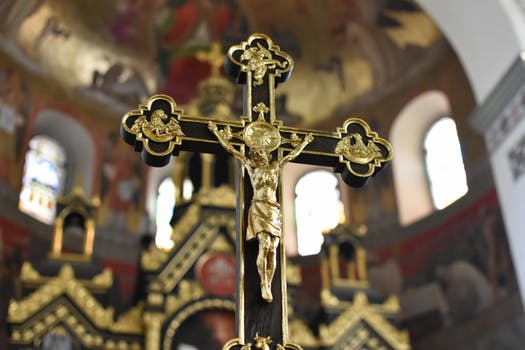
Orlæg – Primal Law
In Norse mythology, Providence could relate to orlæg, ‘primal law’, which upholds order throughout the tripartite universe envisaged as the tree, yggdrasil, maintained via wyrd. Identifiable as a divine feminine principle, it is orlæg who sets the pattern weaved by the Norns, and at times she is a primal Goddess, an entity without beginning or end.
‘LÆG’, derived from Old Norwegian LAGU, means ‘law’, only it is a much broader, more binding, concept than our modern word. It also encompassed the concept of ‘lore’, knowledge and wisdom of the past, for use in the present. The prefix UR denotes a primal state, embodied in the Ur rune which, in the Rune Poems, represent aurochs (urus), an ancient and quite large bull, ancestor of domesticated cattle. The aurochs is the bull depicted in many works, from Paleolithic European cave paintings to the cult of Mithras, as well as the legend of Ishtar and the Babylonian Bull of Heaven. The term ‘OR-LOG’ means something along the lines of First Law, Primal Law, Ultimate Law (The Law, as in the Law or Word of God). Also, it could be seen as First Principle or Primal Layer. To sum up, orlæg is the ultimate law of Creation, the governing factor that is envisaged through the unfolding of fate/wyrd which emerges from orlæg, just as the Gnostic view of Fate is that which is beget and one with Barbelo, First-Thought. Before order is brought to the great void, it is law-less, in a state of chaos. The first-thought, therefore, is the commencement of all order out of the Chaos. It is, in fact, the first law (lægu), setting the pattern for all else to come. In Hesiod’s Theogony, Chaos is the original dark void from which the universe begins to emerge. It is cognate with the Norse Ginnungigap, the pregnant void or ‘yawning abyss’, existing before the creation of the manifest world, containing and initiating the marriage between the twin pillars of fire (Muspelheim) and ice (Niflheim), male and female, Uranus and Gaia, heaven and earth.
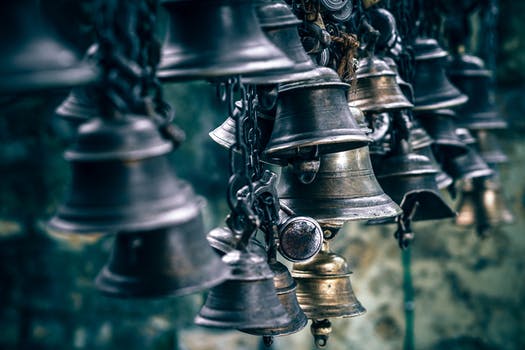
This description is totally in keeping with Providence as Protennoia first-thought, and described in the Gnostic text Trimporphic Protennoia:
“I am the Invisible One within the All. It is I who counsel those who are hidden, since I know the All that exists in it. I am numberless beyond everyone. I am immeasurable, ineffable, yet whenever I wish, I shall reveal myself of my own accord. I am the head of the All. I exist before the All, and I am the All, since I exist in everyone.”
Here, we see Protennoia as the invisible force that ‘counsels those who are hidden’, suggestive of her role as Providence, the hand that guides the weavers as they mete out fate, depositing us at the crossroads where we must choose are path carefully. The omnipresence of Protennoia reminds us that, like the Eye of Providence, She can see all and, like the Hand of God, she moves within All.
“The eyes of the LORD are in every place, beholding the evil and the good.”
Proverbs 15:3
“…and although our thoughts, words and actions may be hidden from the eyes of man, yet the All-Seeing Eye, whom the Sun, Moon and Stars obey, and under whose watchful care even comets perform their stupendous revolutions, pervades the whole, and will reward us according to our merits.”
Freemasons Monitor, 1797, Thomas Smith Webb
Once again, being numberless, we also see Her as the Primal Mothers, the pregnant void, Ginnungigap, the Qabbalistic Ain Soph, above even Kether.
Wyrd
While Wyrd/Fate is present at each individual moment, presenting us with the choice, this choice is given under the tutelage of orlæg, Providence, that which maintains the order of the universe and steers us towards our destiny. It is the destination, the boat and the ferryman.

The Anglo-Saxon word Wyrd derives from the name of one of the Norns, Urd, the culmination of all past choices and affecting the recurrence or emergence of new moments to come, all guided and directed under the aegis of Providence, orlæg. Indeed, Wyrd is the only recalled Norn in the Anglo-Saxon tradition, the other two being nameless aspects of orlæg as that which has brought us to the crossroads and that which will take us to crossroads anew, or return us if need be. Wyrd originates in the proto-indoeuropean wert, to turn or rotate, and translates from the Anglo-Saxon as “to become” or “come to pass”. In Platonic philosophy, the world of ‘becoming’ relates specifically to the sensible world, the state and condition of the descended soul striving to achieve union with the realm of Ideas, the intelligible world of Nous, described as ‘being’. Thus Wyrd is that moment which relates directly to our current situation. Indeed, when talking about fate, we rarely think of fate as directing past events, not do we consider fate specifically as interacting with our future selves who are yet to be, rather the Fates are immediately involved in the unravelling of our wyrd at each moment. Fate, or Wyrd, then is the unfolding of Primal Law, orlæg under the watchful eye of Providence.
Wyrd, or Fate, therefore, is intrinsically linked to time. Indeed, fate exists within and is a controlling facet of time. Providence, orlæg, on the otherhand, precedes, begets and influences Fate, the guiding hand that provides the pattern in keeping with destiny and cosmic order, the law that structures and exists before time and instigating the process of emanation from the One. Hence, within the mundane social structure, the three classes of Thrall, Karl and Jarl (worker, warrior and priest/king) are associated with production (cthonic), action (terrestrial) and order (celestial). Here, again, within the Norse cosmology, we see the repetition of the triune universe as envisaged by the Babylonian astrologers who looked to the stars (celestial) to reveal their Wyrd.
To understand better what is meant by primal law, especially within the context of orlæg and Providence, we must address the word ‘law’, which features within the Craft from the Wiccan ‘law of threefold return’ to Cochrane’s Witch Law (traditional), and has a close relationship with Eastern concepts such as Karma. Etymologically, law originates in the Old English lægu, deriving from the identical word in Old Norse. The meaning of this word appears to be ‘laid down’, that which is fixed or placed firmly. Interestingly, lagu replaces another Old English word (presumably during the period of Danelaw) gesetnes. This word appears to be reminiscent of the Keltic word geis, which refers to a binding oath, obligation or prohibition, sometimes a spell or curse that restricts the recipient in some way, similar to a law but often individual and pertaining to death. Quite often, within Keltic myth, geasa bind the recipient under the conditions of death and, when the terms of the geis are broken, the hero meets their demise. Not infrequently, the one who brings about the eventual undoing of the geis and the death is a feminine divinity, even sometimes a ‘hag’. This is not insignificant when we consider the understanding of Providence and orlæg already proposed, being the primal triune Goddess, the Three Mothers. The ‘hag’ who appears in the tale of Cuchullain, for example, or Blodeuwedd in the case of Llew Llaw Gyffes, represent the aspect of fate that possesses the foreknowledge (Providence) to bring about the demise of the hero in accord with their destiny, the often difficult and obscure terms of the geis. Frequently, geasa have more in common with prophecy than with binding spells being more the knowledge of the circumstance of death as opposed to a particular taboo. For example, we could view the geis of Llew Llaw Gyffes as a binding spell that makes it difficult for his enemies to kill him. Alternatively, it is in fact a prophecy of his demise, specifying the unusual circumstances under which it will occur and under the ever-watchful eye of Herself, in this instance Blodeuwedd. Indeed, when something is divined such as this, we say it is ‘foretold’ or ‘foreseen’ (providence).
The word lagu also occurs in the Anglo-Saxon Rune Poem, usually translated to mean ocean, while in the Old Norwegian and Icelandic Run Poems, the word is lögr, which is water or more commonly lake. Indeed, Anglo-Saxon dictionaries give two meanings to the Old English lagu, meaning both ‘law’ and ‘ocean’. At first, these two definitions appear unrelated but, through a Gnostic perspective via the understanding of Pronoia and taking into account the literature (Apocrpyhn of John & On The Origin of the World), as well as other related mythology, we see how the theme of water features. The Gnostic texts all use a fluid language that indicates not a separation of concepts from the highest down to the lowest but a natural and organic flow of light from Barbelo to Norea and Eve. This flow and ebb of pneumatic soul is female aspected and, as Providence, she sets down the ‘primal law’, which guide the wyrd. Here we se the Goddess in her supreme capacity, the reflection of primordial spiritual light, and the immutable force that ordains the destiny of the world, setting it all in motion and ensuring the harmony is maintained through the agents of fate. Fate is in Anglo-Saxon dictionaries, usually given as the definition of the Old English word orlæg but, as we have seen, this is more appropriately a higher function of fate. Orlæg in Old English denotes cosmic law, the principles which govern the universe as well as individual purpose, our destiny. Therefore, Fate must abide these certain rules and work within these parameters in order to weave out the wyrd and present the choice that nurtures the infant spirit and guides us toward our destiny; this is orlæg.
“Thence come the maidens, Mighty in wisdom,
Three from the place, Under the tree,
Wyrd is called one, Another Werðende
Scored they on wood, Scyld is the third;
There Laws they laid, There life chose,
To men’s sons, And spoke orlæg”
(Völuspa 20-25)

In Northern mythology, the Norns are rarely (if at all) described as weaving fate, contrasting their other counterparts, such as the moirae. Rather, the texts speak of them ‘laying’ (related again to lagu and law, as in “laying down the law”), scoring (on wood) or speaking orlæg. In order to learn the runes, we are advised to score them on wood. This is not to say that the weaving metaphor is not apparent in Northern mythologies, where the stars of Orion’s Belt are known, in Scandinavia, as Friggjar rockr, Frigg’s Distaff. Aside from Frigg, the primal mother Goddess in Teutonic mythologies, there is also a description of the Valkyries as weavers from the Song of the Spear (Darradtharljodth).
“The warp is made of human entrail;
Human heads are used a weights;
The heddle-rods are blood-wet spears;
the shafts are iron-bound, and arrows are the shuttles.
With swords we will weave this web of battle”
In this poem, it is the Valkyries alone who can “…choose the slain…” as they sing in their song. Curiously, Valkyries are not always so bloodthirsty and are associated not just with ravens but with swans. Interestingly, in the story of Wayland the smith, Völundarkviða, Völund (English Wayland) and his two brothers are wed to three swan maidens (Valkyries). After seven winters, the Valkyries depart and the events of the saga unfold. The Old English equivalent wælcyrie seems to appear in manuscripts usually to denote a sorceress or dark deific figure of some variety. Curiously, one manuscript from the early 11th Century, mentions wælcyrge in relation to another word, gydene, which means ‘goddess’. With an Anglo-Saxon dictionary, we can quickly put together the phrase albe gyden, literally meaning ‘White Goddess’. As an interesting aside, this phrase is remarkably reminiscent of traditional witch Robert Cochrane’s reference to Alba Guiden – White (OE albe, Latin alba from albus meaning white) Goddess (from gyden, OE Goddess).

Of course, no discussion on primal law such as this could be complete without mention of that well known, and oft misunderstood, passage from Liber AL vel Legis, the Thelemic Book of the Law:
“Invoke me under my stars: love is the law, love under Will”, qualified with the statement: “Each action or motion is an act of love, the uniting with one or another part of Nuit; each such act must be under will, chosen so as to fulfill and not to thwart the true nature of the being concerned”. According to Crowley, True Will relates to our destiny, the sublimation of the ego and attaining to Divine Will. This is perfectly in keeping with Cochrane’s Witch Law which says: “Do what is necessary, not what you desire”. Crowley further emphasises this utter devotion to the primal law, Providence, Queen of Infinite Space (Nuit) in his Liber AL vel Legis: “There is no law beyond Do what thou wilt”.
Quite often, fate and providence are described as the immutable law that governs the universe in accordance with the will of God. One dictionary definition gives it thus:
“Theological fate represents Deity as above the laws of nature, and ordaining all things according to his will — the expression of that will being the law.” That Will, we could say, is Protennoia, first-thought, as well as orlæg as primal law, True Will of the divine. She exists as “…three permenances: Father, Mother and Son”, and sets this law in motion that steers us toward the fulfilment of our true destiny. Indeed, it is the conspiracy of the universe for us to attain to our true nature or, as Crowley put it: “Nuit obtains the satisfaction of Her Nature when the parts of Her Body fulfil their own Nature.”
Eye of Providence – Mirror of the Soul
The concept that pronoia, first-thought, is a conspiracy on behalf of the world in some way indicates the divine presence of spirit throughout the manifest world, expressing an interest in assisting in the elevation of spirit to its primal condition. This concept was not new when writer and activist John Perry Barlow expressed his ideas of pronoia in the nineteen-seventies. The omnipresence of First-Thought implies a watchfulness, Providentia literally meaning foresight. It is little wonder, then, that this idea has been symbolised throughout the ages by the eye.

The Eye of Providence is most often recognised to denote God’s involvement in the world, the intervention of divine hands in the unfolding of man’s destiny, the watchful gaze of the father over His children, the Creator over Creature. From the instant of creation to the present moment, and into the ‘becoming’ (Wyrd), Providence exudes influence throughout the three realms of that which has been (past), that which is (present) and what will be (future). Thus, in its most basic form, Providence might be considered the first triplicity, while being comparable in many respects to the moirai of ancient Greece. Indeed, in Qabbalah, there exist a trinity that supersedes the chief sephirah, Kether, and is, in fact, that from which all else emanates, each sephiroth upon the Qabbalist Tree of Life being an emanation from this ‘Absolute’. Providence, then, we can understand to be the first and last, the beginning and end, the Alpha and Omega, the all and infinite in totality. Being the ‘Limitless’, the ‘no-thing’, it is impossible to ascribe a definite to the infinite and, therefore, renders this attempt rather futile. However, we may make certain suggestions, poetic inferences, that may assist upon the path toward gnosis, Qabbalistically ascending the Tree toward the ‘Ain’ where scales fall from our eyes and enable us to ‘see’.
“A land which the LORD thy God careth for: the eyes of the LORD thy God are always upon it, from the beginning of the year even unto the end of the year.”
Deuteronomy 11:12
The repetition of the yearly cycle, from beginning to end, is suggestive of the endless cycle, symbolised typically by the Ouroboros, the serpent devouring its own tale. Curiously, the symbol of the circle has also been suggested as composing the earliest depictions of the All-Seeing Eye, being a cross within a circle. Furthermore, this symbol has been identified too as the ‘mark of Cain’, the blessing or curse (tradition dependent) received by the Edenic tanist after departing the garden. This mark, it is alluded, was branded upon the forehead of Cain, coinciding with the location of the ajna-cakra, the mystical ‘third eye’ of Eastern yoga.
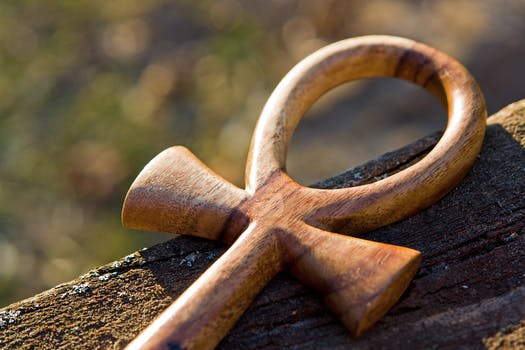
The Eye of Horus, that most popular of images envisaged as the All-Seeing Eye, is personified in the early Egyptian Goddess Wadjet, meaning ‘green one’. This again alludes to the annual cycle of ‘greening’, the fecundity of the earth evidenced in the verdant appearance for half of the year. Within traditional craft, the ‘Green Man’ is opposed annually by his tanist ‘Man in Black’, duelling at the appropriate festivals for supremacy and presiding over the festivities that dominate the half of the cycle. Wadjet was a serpent Goddess, denoting her potency as an avatar of Wisdom, depicted as a snake headed woman or an Egpytian Coba present on the crown of Pharoahs to signify royalty. Associated explicitly with the land, the ‘Going forth of Wadjet’ was a feast celebrated on December 25th, while other dates of import include June 21st, significantly winter and summer solstices respectively. Interestingly, these two annual markers correlate with the feast of St John (June 23rd) and the birth of Jesus (December 25th), separated by six months. Traditional North European folk activities include British mumming plays that enact the half yearly duel between St George and the Turkish Knight (Black Man) at Christmas and May Day during which either one or the other will die and be resurrected depending upon the season and twin acknowledged.
In Hebrew, ayin is the sixteenth letter of the aleph-beth (alphabet) and means literally ‘eye’. Furthermore, in Judaism, and Qabbalah in particular, it signifies the Eye of Divine Providence.It is relevant at this juncture to observe that the eye is the organ that detects light, vision itself being the ability to interpret information from light, LUX. In Qabbalah, the right eye possesses five states of kindness, while the left eye five states of severity or might. These might easily be compared to the ten sephiroth of the Tree of Life, divided equally between twin pillars or eyes. Expanding our scope, this incorporates many and, seemingly, diverse and unrelated mythologies. For example, according to Norse mythology, Odhinn sacrifices one of his eyes in his quest to receive the sacred mead of inspiration, comparabale to the Soma, the draught of immortality. Odhinn’s bright son Baldr is slain by his blind borther Hodr, while Cain himself is killed by his blind descendant Lamech. In Celtic mythology, the duellists continue with the solar deity Lugh competing with the ‘dark’ giant Balor, whose death at the hands of his grandson is prophesised despite his one eye which destroys any under its gaze. Looking at the superstition within folklore that fears the ‘evil eye’, we now see a pattern emerge and can confidently identify the left, sinister, eye as that which belongs properly to the ‘destroyer’.
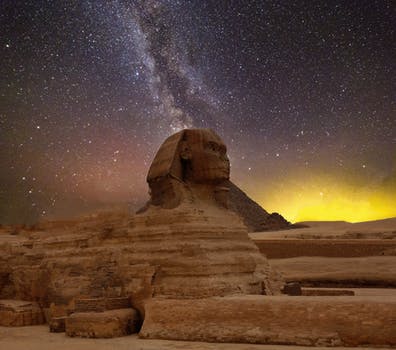
Blind Gods pervade mythology, chief among the Gnostic and heretical Angelology being Samael, the ‘blind God’, who begets Cain upon Eve as the serpent in the Garden, a Luciferian avatar. As the ‘lightbringer’, Samael brings the means with which to ‘see’, not with the physical organ but with another which perceives a different light, the ‘light of God’, in many respects comparable to Sabaoth or Baldr, overcoming the dark aspect of the Old/Father God and succeeding Him. The blindness of Hodr or Samael could be taken as posessing the ‘second sight’ that is inwardly focussed, lunar aspected, rather than in the daylight; remember that the “…space, anterior to all manifestation, was conceived as the naked body of the Goddess Nuit [Night], the queen of infinite space…”. Indeed, with one inward and one outward eye, one could perceive the watchful eye of Providence. Samael, then, is not blind in the sense of being ignorant, but rather he is possessed of lunar attributes that allow him to see clearly in the cold darkness of night, the nocturnal clarity of sight. Just as the physical eyes are unable to look directly at the sun, the source of earthly vision, so the Luciferian light is hard to perceive, revealing those concealed depths within that our most difficult to look at.
“The blinding of Tiresias was in affect, then, a communication to him of lunar wisdom. It was a blindness merely to the sunlight world, where all pairs of opposites appear to be distinct. And the gift of prophecy was the correlative vision of the inward eye, which penetrates the darkness of existence.”
The Masks of God, Joseph Campbell
Ayin, in Qabbalah, signifies one part of the Negative Veils, the triune infinity that emanates the Tree of Life, the ten siphiroth that constitute the four worlds of creation. These three planes of ‘unmanifestation’ precede the four worlds of manifestation, Atziluth (Emanation), Beriah (Creation), Yetzirah (Formation), and Assiah (Action). The three Negative Veils are conceived of as being the primal substance, Nuit or Night, from whom emanate the first light (star) that heralds the universe (Kether). Comparable in many respects with the Gnostic Pleroma, we recall here the Luciferian theme within the Gnostic texts “…when Sophia let a drop of light fall.” This echoes the commencement of the Gnostic cosmology whereby in the beginning is ‘darkness’: “…it existed before chaos came into being, and that the latter is posterior to the first product.”
The Negative Veils are called Ayin, Ayin Sof and Ayin Sof Aur; that is Negative/No-thing, Limitless and Limitless Light respectively. No-thing is a deceptive title, however, because it is the pregnant void within which all is conceived and born, from which all emanates. It is the divine paradox that cannot be comprehended nor seen or felt, yet it permeates all that is in existence. Ayin here is not simply no thing, it is the potentiality of all things, the infinite, absolute, the ‘unhwen dolmen’. The Hebrew sof, stems from the root safah, meaning ‘to cease to exist’. Therefore, Ayin Sof is immortal, endless, that which never ceases to exist, literally without limit or cessation: “There is no place where he ceases to exist”, immuatable and boundless. Represented numerologically as zero 0, this is the potent circle, the embodiment of the cycles of becoming, being and un-becoming. Recall now the words of Trimorphic Protennoia: “I am numberless beyond everyone. I am immeasurable, ineffable”. This symbol perfectly expresses the totality of Ayin, the precedence before 1, Kether, whilst containing the whole Tree and, itself, unconfined. “The Veils, in fact, while they conceal that which they represent, enable us to see clearly that to which they form a background.” Being the totality, the Absolute, the Ayin here is comparable to Providence, being nothing yet present in all things, the eye that sees all.
The Negative Veils, being three, may be readily matched against the Norns, the Moirae or the Graiae, the three blind sisters, sometimes witches, who in various mythology share a single eye or weave out the fates of men. Fate, the unfolding of events, becoming (wyrd) requires the weavers to have knowledge not merely of past and present, but foresight (providence), existing simultaneously in the three worlds, possessing a condition whereby time is irrelevant and all possibilities exist as one. The Primal Law orlæg (Ur-law) is the first thought that is the law which the Fates adhere to and speak, the pattern which they weave. The light of Truth provides the lamp that illuminates the dark path that the Spinners weave before us leading toward our ultimate destiny. It is the shadow, the son behind the sun, who bears the torch of en-lightenment.
I am part of my mother, and I am the mother
I am the wife, I am the virgin.
I am pregnant, I am the midwife.
I am the one who comforts during labour pains.
My husband produced me, and I am his mother,
And he is my father and my lord.
He is my potency; what he desires he speaks with reason.
I am becoming, but I have borne a lordly man.Song of Eve, On the Origin of the World, Nag Hammadi Library











